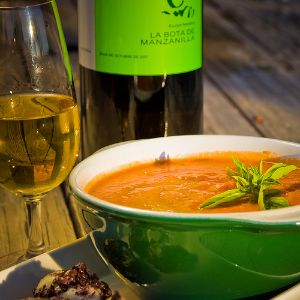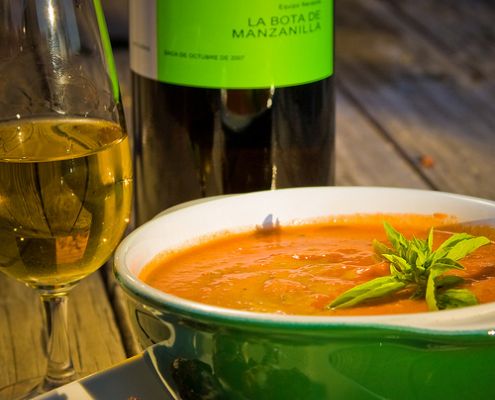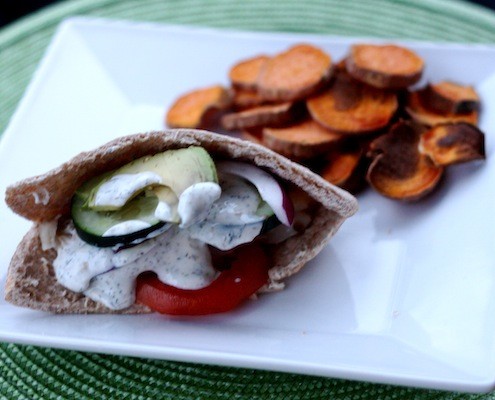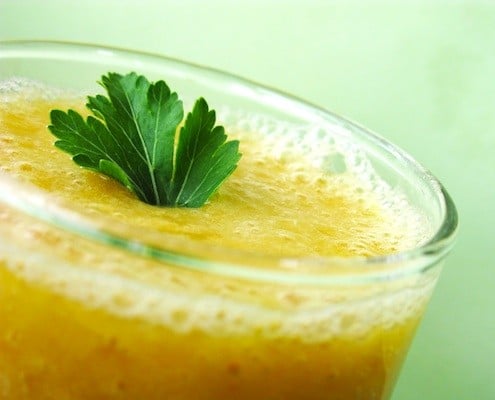Tim Elliott is a marketer, blogger, and podcaster based in…
The wine dogmas of back in the day are long dead, and instead it is now the flavor of the food that decides what wine to drink with it.
By Tim Elliott – Photo By by Ryan Opaz via Flickr
Wine is made to be enjoyed with food and pairing the “right” wine with dinner has long been a subject of debate. Back in the day – anytime before 1990 or so – wine pairing followed fairly traditional rules. White wine was enjoyed with fish, shellfish and chicken dishes that were complemented by the mild flavors and acidity of the wine and red wine was pretty much enjoyed with everything else. Except for aperitifs and dessert which has their own special wines like Champagne, Sherry or any number of late harvest wines from France, Germany or Hungary. There were exceptions to this conventional wisdom, of course, such as red Burgundy with Coq au Vin but for the most part there were a few simple rules of thumb to follow.

All that came to an end in 1989 with the publication of David Rosengarten and Joshua Wesson’s, “Red Wine With Fish: The New Art of Matching Wine With Food.” The books’ premise has become the generally accepted practice today but I remember how radical their ideas sounded back then. Breaking with long-held tradition, the authors used flavors, textures and components of food to march with wine. For example, the traditional pairing of Chianti with tomato-based pasta dishes works because both have acidity. Similarly, a salmon dish actually pairs better with Pinot Noir or Beaujolais as the wines’ bright fruit stand up to the full-bodied flavors of the fish better than Chablis or Chardonnay.
So if there is one thing to remember in this new order of pairing wine with food, it’s there are no firm rules. Generally, lighter flavors pair with lighter wines but color has nothing to do with the intensity of flavor. On the other extreme, more hearty dishes pair better with full flavored wines. In the middle there are some interesting scenarios to consider like what pairs well with spicy food. Lighter food with spice, such as Asian fare, tend to work best with white wines with bracing acidity. Sauvignon Blanc comes to mind here but also a dry Alsace or German Riesling can work well. For heartier spicy food, such as Mexican, fruit-driven reds pair best such as Argentine Malbec, Spanish joven Garnache and even many New World Syrah. While Cabernet Sauvignon might stand up to the bold flavors here, the tannic structure in many Cabs would not mesh well with the spices making it a textural mismatch. But pair that same tannic Cabernet with a fatty steak and the fat actually smoothes the tannins making this a classic match.
But these new rules of matching flavor, textures and components sometimes breaks down. Butter or cream sauces are one such problem area. Where flavor and texture call for these rich sauces to be paired with buttery and rich wines such as a Napa Valley Chardonnay, I find that one goes into “butter overload”. In this instance, I like to cross things up and go with a crisp, acidic wine with some aggressive flavors like New Zealand Sauvignon Blanc or even an earthy Dolcetto, Here the acidity cuts the butter or cream sauce and complements the dish as opposed to getting lost within it.
Of course everyone’s palate is different so it’s best to experiment with different wines to find out what you prefer with a particular dish. Need some specific recommendations of likely matches and have an iPhone? Download the free Hello Vino and Nat Decants apps to get started (the former is also available for those of us using Android phones; the latter has a Blackberry version). Whatever your choice just drink what you think tastes good with your food and don’t worry too much about following any rules. You might be surprised with what you discover.
Tim Elliott is a marketer, blogger, and podcaster based in the Twin Cities. In 2004 he created Winecast, the first wine podcast, which is also a wine blog. He has also written about wine for Minneapolis City Pages and Vineyard & Winery Management Magazine.





Great article,thanks for the tips,I trralky enjoyed reading it!
It’s funny, I’ve always opted to drink whatever tastes good to me with a meal, and I just so happen to prefer a nice crisp white with a rich pasta dish, like fettuccine alfredo. Of course, I also love champagne with pizza, which always draws laughs, but I don’t care – it tastes great!
Thanks, I downloaded Hello Vino app.